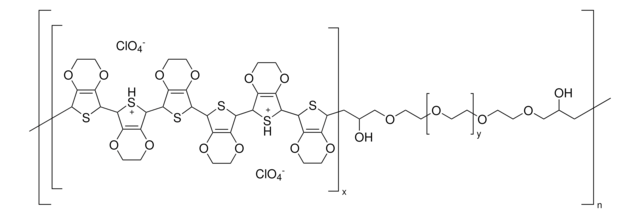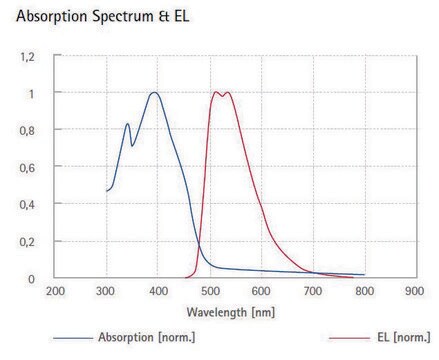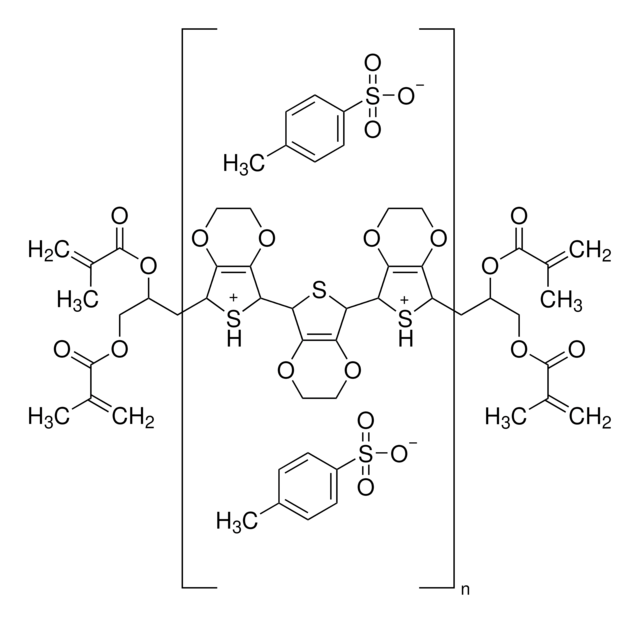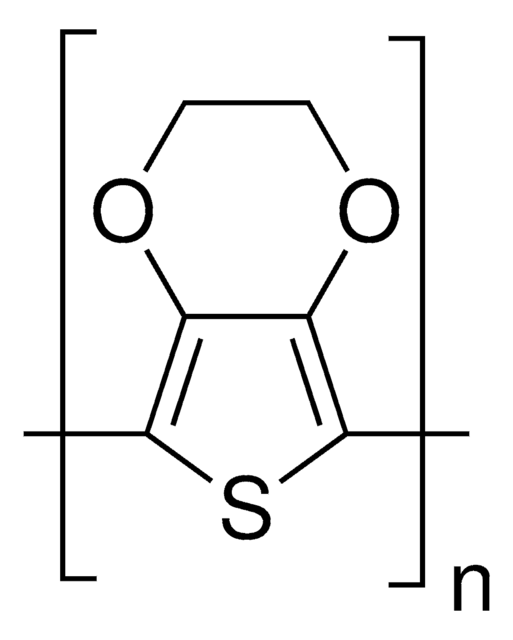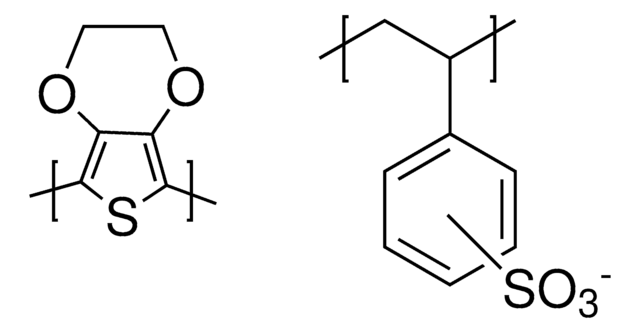687316
PEDOT
bis-PEG, lauryl terminated, 0.7 wt. % (nitromethane dispersion)
Synonyme(s) :
Aedotron™ C3-NM, C12-PEG-block-PEDOT-block-PEG-C12
About This Item
Produits recommandés
product name
Poly(3,4-ethylenedioxythiophene), bis-poly(ethyleneglycol), lauryl terminated, 0.7 wt. % (dispersion in nitromethane)
Forme
liquid (dispersion)
Niveau de qualité
Contient
perchlorate as dopant
Composition
Acetonitrile, 4-8 wt. %
Aedotron™- C3 polymer, 0.2-0.7 wt. %
Nitromethane, 90-95 wt. %
proprietary processing additive, 0.1-0.7 wt. %
Propylene glycol, 0.0-0.3 wt. %
Concentration
0.5-0.9 wt. % (content of dispersion)
0.7 wt. % (dispersion in nitromethane)
Résistivité superficielle
600-3000 Ω/sq
Transmittance
70-85%
Taille des particules
200-600 nm
Conductivité
10-60 S/cm
Vous recherchez des produits similaires ? Visite Guide de comparaison des produits
Catégories apparentées
Description générale
Application
Caractéristiques et avantages
Attention
Informations légales
Mention d'avertissement
Danger
Mentions de danger
Conseils de prudence
Classification des risques
Acute Tox. 4 Inhalation - Acute Tox. 4 Oral - Carc. 2 - Flam. Liq. 2 - Repr. 2
Code de la classe de stockage
3 - Flammable liquids
Classe de danger pour l'eau (WGK)
WGK 2
Point d'éclair (°F)
71.6 °F - closed cup
Point d'éclair (°C)
22 °C - closed cup
Certificats d'analyse (COA)
Recherchez un Certificats d'analyse (COA) en saisissant le numéro de lot du produit. Les numéros de lot figurent sur l'étiquette du produit après les mots "Lot" ou "Batch".
Déjà en possession de ce produit ?
Retrouvez la documentation relative aux produits que vous avez récemment achetés dans la Bibliothèque de documents.
Les clients ont également consulté
Articles
In the emerging field of organic printable electronics, such as OLEDs and organic photovoltaics (OPVs), there is a significant need for improved organic conducting and semiconducting materials. This paper reports our recent progress in two fields: 1) the development of solvent-based dispersions of the intrinsically conducting polymer (ICP) poly(3,4- ethylenedioxythiophene) (PEDOT) and 2) the synthesis of new electron-deficient (n-type) semiconducting polymers.
Conjugated polymers offer charge transport between inorganic, electrically conducting metals and organic, proton-conducting biological systems.
Notre équipe de scientifiques dispose d'une expérience dans tous les secteurs de la recherche, notamment en sciences de la vie, science des matériaux, synthèse chimique, chromatographie, analyse et dans de nombreux autres domaines..
Contacter notre Service technique